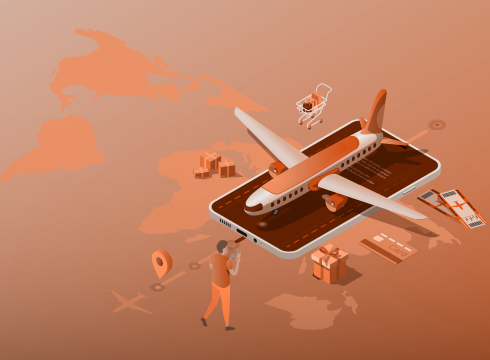The Future of Mobility is Here: Here’s All You Need to Know About MaaS

Imagine a world where you can access any mobility service you need with just a few taps on your smartphone. A world where you can choose the best option for each trip, whether it’s public transport, car-sharing, bike-sharing, taxi, or a combination thereof. A world where you can pay for all these services with one account, without worrying about tickets, parking fees, insurance costs, or maintenance issues.
Sounds too good to be true? Well, it’s not. It’s called Mobility as a Service (MaaS), and it’s already here.
MaaS is a service that enables users to access various forms of mobility and mobility-related services through a single digital platform. Users can plan, book, and pay for multiple types of mobility services with one account, based on their travel needs and preferences.
MaaS Adoption: Drivers and Challenges
We’ve got the framework for MaaS, but what are the main factors that influence the adoption of MaaS by users, providers and policymakers? And what are the main challenges and barriers that need to be overcome before MaaS can become a mainstream reality?
User preferences
One of the main drivers of MaaS adoption is user preferences. MaaS can cater to the diverse and changing needs of urban travellers by offering them more choice, flexibility and convenience. MaaS can also provide incentives for users to shift from private car use to more sustainable modes of transport, such as public transport, bike-sharing or ride-sharing. According to a survey conducted in six European cities, users who are more likely to adopt MaaS are those who already use multiple modes of transport, value environmental benefits and have high technology use.
Still, user preferences can also pose a challenge for MaaS adoption. Not all users are willing or able to change their travel habits and preferences, especially if they have a strong attachment to car ownership or low trust in new mobility services. Some users may also have different expectations and requirements from MaaS depending on their socio-demographic characteristics, travel patterns and lifestyles. Therefore, MaaS providers need to understand their target segments and offer tailored solutions that meet their needs and preferences.
Environmental concerns
Another driver of MaaS adoption is environmental concerns. MaaS can contribute to reducing the environmental impact of urban transportation by optimising the use of existing infrastructure and vehicles, promoting modal shifts towards low-carbon options and encouraging behavioural changes among users. A study by Goodall estimated that MaaS could reduce vehicle miles travelled by 15% and CO2 emissions by 16% in the US by 2030.
However, environmental concerns can also be a barrier to MaaS adoption. Not all users are aware of or motivated by the environmental benefits of MaaS, especially if they perceive other factors such as cost, convenience or quality of service as more important. Moreover, MaaS may not always be environmentally friendly if it increases the overall demand for transport or induces a modal shift away from public transport towards on-demand services.
Technological innovations
MaaS relies on advanced technologies such as smartphones, mobile applications, real-time data, artificial intelligence and blockchain to enable the integration of different mobility services and provide users with information, booking, payment and feedback functions. These technologies also enable new business models, such as subscription-based or pay-per-use schemes, that can increase the affordability and attractiveness of MaaS for users.
However, technological innovations can also be a challenge for MaaS adoption. Not all users have access to or are familiar with the technologies required for using MaaS, especially among older or low-income groups. Some users may also have concerns about data privacy and security when using MaaS platforms that collect and share their personal and travel information. Furthermore, technological innovations may not be sufficient to ensure interoperability and compatibility among different mobility services and platforms, which may require common standards and protocols.
Regulatory frameworks
MaaS requires supportive policies and regulations that can facilitate collaboration among different stakeholders involved in the provision of mobility services, such as public authorities, transport operators, service providers and platform developers. These policies and regulations should also ensure fair competition, data protection, user rights and safety standards for MaaS. For example, policies and regulations can support MaaS adoption by providing subsidies or incentives for users or providers of sustainable mobility services, creating a level playing field for different modes of transport, enabling data sharing and interoperability among different platforms and services, and setting quality and performance criteria for MaaS.
On the other hand, regulatory frameworks can also be a hindrance to MaaS adoption. Not all countries or cities have the same legal and institutional conditions for MaaS development and implementation. Some may face regulatory gaps or uncertainties that create barriers to innovation and collaboration among different actors. Some may also face conflicting interests or resistance from incumbent transport operators or authorities that perceive MaaS as a threat to their market share or control over mobility services.
The Vision for MaaS
MaaS is not just a concept or a vision. It is already a reality in many cities around the world, where innovative MaaS platforms and applications are providing users with more convenient, flexible and sustainable mobility options. Let’s share with you some examples of MaaS success stories that inspire us:
One of the pioneers of MaaS is Whim, which started in Helsinki and has since expanded to Antwerp, Birmingham and Singapore. Whim allows users to choose between multiple tiers of service, including a pay-as-you-go option and a monthly subscription that provides unlimited access to public transport and short taxi rides, as well as one shared bike trip and discounted car rental per month. Whim aims to offer users the freedom of mobility without the hassle of owning a car.
Another example is Wien Mobil, an initiative by Wiener Linien, Vienna’s public transport operator. Wien Mobil is an application that allows users to locate the various mobility services close to them, such as public transportation, self-service bicycles, car-sharing, cabs, scooters and parking lots. Users can also book and pay for these services through the app. Wien Mobil is an initiative of Wiener Linien, Vienna’s public transport operator. Wien Mobil aims to offer users a comprehensive and convenient mobility solution that integrates different modes of transport in one platform.
One of the most impressive examples of MaaS is Istanbulkart Mobile App, developed by the Tmob team for Istanbul Metropolitan Municipality. Istanbulkart Mobile App allows users to create a digital card on their smartphones and use it for public transportation, parking, tolls and other services in Istanbul. Users can also top up their balance, check their transactions, and benefit from various campaigns and discounts through the app.
Istanbulkart Mobile App is a game-changer for Istanbul’s mobility ecosystem. It provides users with a convenient and secure way to access various mobility services with one app. It also helps reduce physical contact and cash usage during the pandemic. Moreover, it enables users to manage their mobility expenses more efficiently and transparently.
How to Develop a MaaS Application?
It’s clear that MaaS has the potential to make urban mobility more efficient, convenient, and sustainable. But how can you develop a MaaS application for your business or city? Here are some steps you can follow:
Define your project purpose and goals: What problem are you trying to solve with MaaS? Who are your target users, and what are their needs and expectations? How will MaaS benefit your business or city in terms of revenue, efficiency, customer satisfaction, environmental impact, etc.?
Assess your financial feasibility and risks: How much will it cost to develop and operate a MaaS application? What are the expected revenues and benefits? What are the potential challenges and barriers to overcome? How will you measure your return on investment?
Gather support from stakeholders: Who are the key actors involved in your MaaS project? This may include transport operators, service providers, regulators, customers, partners, etc. How will you communicate with them and get their buy-in? What are their roles and responsibilities?
Choose your technology platform and provider: What features and functionalities do you want your MaaS application to have? This may include trip planning, booking, payment, real-time information, loyalty programs, feedback, etc.? How will you ensure the security and privacy of your data and transactions? How will you integrate data from multiple sources and providers? How will you update and maintain your application? You may want to consider outsourcing to an experienced MaaS provider who can offer you a ready-made or customised solution that meets your needs and expectations.
Launch and promote your MaaS application: How will you test and validate your MaaS application before launching it to the market? How will you market and advertise your MaaS application to attract and retain users? How will you monitor and evaluate your MaaS performance and user satisfaction? How will you collect and use feedback to improve your MaaS service?
Developing a MaaS application can be a complex and challenging process but also a rewarding one. By following these steps, you can create a successful MaaS solution that meets the needs of your users and stakeholders while enhancing your business or city’s mobility.
Let’s Kickstart Your MaaS Project Together
If you are looking for a reliable and innovative MaaS provider who can help you develop your own MaaS application, look no further than Tmob. Tmob offers cloud-based digital services that enable mobility operators to create their own branded MaaS applications. With our custom-fit digital ecosystem solutions, you can benefit from
- A flexible and scalable platform that supports various transport modes and services
- A user-friendly interface that provides seamless trip planning, booking, payment, real-time information, loyalty programs, feedback, and more
- A secure and compliant platform that protects your data and transactions
- A cost-effective and time-saving solution that reduces your development and operational costs
- A dedicated and experienced team that provides you with technical support and guidance
Contact us today to find out how we can help you create your own MaaS application. Together, we can make mobility smarter and easier for everyone.



